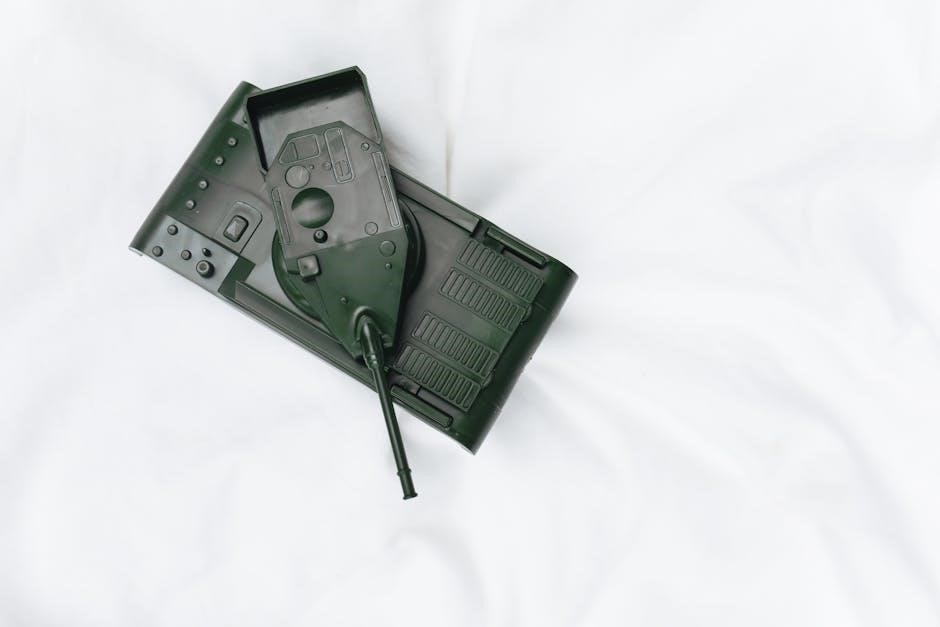asme b31.1 pdf
ASME B31․1⁚ Overview
ASME B31․1, a crucial standard, establishes minimum requirements for the design, materials, fabrication, erection, testing, and inspection of power piping systems․ These systems are typically found in power plants, industrial facilities, and heating and cooling systems, ensuring safety and reliability․ It is an essential document․
What is ASME B31․1?
ASME B31․1 is a section of the ASME B31 Code for Pressure Piping, specifically focused on power piping systems․ This standard outlines the minimum requirements for the design, materials, fabrication, erection, testing, and inspection of piping systems commonly used in power generation, industrial, and institutional facilities; It ensures safety, reliability, and efficiency in these critical systems․ The code covers piping systems found in electric power generating stations, industrial plants, geothermal heating systems, and central and district heating and cooling systems․ ASME B31․1 has been setting the standards for piping safety since 1922․ This standard’s main goal is to prevent failures and ensure that all piping systems function as expected, maintaining the integrity of the infrastructure they support․ The standard is updated periodically to incorporate new technologies, materials, and lessons learned from real-world applications, ensuring that it remains up-to-date․

Scope of ASME B31․1
ASME B31․1 applies to piping systems found in power plants, industrial facilities, geothermal heating, and central cooling systems․ It covers design, materials, fabrication, erection, testing, and inspection, ensuring operational safety and reliability in these sectors․
Piping Systems Covered
ASME B31․1 specifically addresses power piping systems, which are crucial for the operation of various facilities․ This encompasses piping within electric power generating stations, including those for steam, feedwater, and other high-temperature and high-pressure fluids․ The standard also extends to piping systems found in industrial plants, covering a broad range of applications related to manufacturing and processing․ Additionally, B31․1 includes piping used in institutional settings, such as large campuses or hospitals, where heating and cooling systems are essential․ It further covers geothermal heating systems, focusing on the transport of hot water and steam derived from geothermal sources․ Furthermore, central and district heating and cooling systems are also within the scope of ASME B31․1, ensuring safe and efficient distribution of thermal energy․ These systems typically involve extensive networks of piping that serve multiple buildings or areas․ The code provides guidelines for the design, materials, fabrication, erection, testing, and inspection of all these types of piping systems, ensuring their safe and reliable operation across diverse applications and industries․ The standard’s comprehensive nature makes it an essential reference for professionals involved in these sectors․
Industries Using B31․1
The ASME B31․1 standard is widely adopted across numerous industries that rely on power piping systems for their operations․ The electric power generation industry is a primary user, where B31․1 guidelines ensure the safety and reliability of piping in power plants․ Industrial plants, encompassing a variety of manufacturing and processing sectors, also heavily utilize this standard for their intricate piping networks․ Institutional facilities such as hospitals and universities, which require robust heating and cooling infrastructure, rely on B31․1 for their piping systems․ Geothermal energy facilities, dealing with the harnessing of earth’s heat, depend on B31․1 to maintain the integrity of their piping․ Furthermore, district heating and cooling systems that serve multiple buildings or entire city areas must adhere to this standard․ This broad adoption of ASME B31․1 underscores its importance in industries that handle high-pressure and high-temperature fluids, ensuring the safe and efficient transport of these substances․ These industries benefit from the detailed guidance on design, materials, and inspection, leading to safer and more reliable operations and the prevention of costly failures․ The standard’s applicability makes it essential for many sectors․

Key Aspects of ASME B31․1
Key aspects of ASME B31․1 include detailed design requirements, material specifications, fabrication and erection guidelines, and thorough testing and inspection protocols․ These elements are crucial for ensuring the safety and reliability of power piping systems, as the document states․
Design Requirements
ASME B31․1 outlines comprehensive design requirements for power piping systems, ensuring structural integrity and operational safety․ These requirements cover various aspects, including pressure design, which involves calculating minimum pipe thickness based on operating pressure and temperature․ The code also addresses stress analysis, requiring designers to consider sustained loads, thermal expansion, and other factors that could induce stress in the piping system․ Furthermore, it specifies requirements for pipe supports and hangers, ensuring that the system is adequately supported and free from excessive stress or torsion effects․ The design phase also involves selecting appropriate materials based on their suitability for the intended service conditions, such as temperature, pressure, and corrosive environment․ The code emphasizes a conservative approach to design, aiming to prevent failures by incorporating adequate safety margins․ Moreover, the standard allows for more rigorous analysis when a designer deems it necessary, ensuring flexibility in approach while maintaining safety standards․ Additionally, it provides specifications for connecting components․
Materials Specifications
ASME B31․1 provides detailed specifications for the materials used in power piping systems, ensuring they meet the required standards for safety and performance․ These specifications cover a wide range of materials, including various types of steel, alloys, and other metals suitable for different service conditions․ The code specifies the chemical composition, mechanical properties, and manufacturing processes for these materials․ It also references other standards, such as ASTM, for material specifications․ Furthermore, the code addresses the selection of materials based on factors such as operating temperature, pressure, and the corrosive nature of the fluid being transported․ It mandates the use of materials that can withstand the expected service conditions without failure․ Material selection is crucial to prevent corrosion, erosion, and other forms of material degradation that could compromise the integrity of the piping system․ The code also includes provisions for welding and fabrication of different materials, ensuring that joints meet the necessary strength and durability standards․ The standard emphasizes the importance of traceability and documentation of materials to ensure quality control during construction․
Fabrication and Erection
ASME B31․1 outlines the crucial requirements for the fabrication and erection of power piping systems, focusing on ensuring structural integrity and safety․ The code specifies detailed procedures for welding, forming, and joining piping components․ It emphasizes the use of qualified welders and welding procedures to maintain the strength and durability of piping joints․ It provides guidelines for the fabrication of bends, elbows, and other fittings, ensuring they meet the design specifications․ The code also covers the assembly of piping systems, including proper alignment, support, and bracing․ It mandates the use of suitable erection methods to prevent stress and distortion during installation․ Furthermore, B31․1 addresses the need for proper cleaning and preparation of piping components before assembly, to prevent contamination and corrosion․ It requires that all fabrication and erection processes be documented and inspected to ensure compliance with the code requirements․ The standard also addresses the handling and storage of piping materials to prevent damage․ Proper execution of these fabrication and erection guidelines is critical for the safe and reliable operation of power piping systems․
Testing and Inspection
ASME B31․1 mandates rigorous testing and inspection procedures to ensure the integrity and safety of power piping systems․ It specifies various types of tests, including hydrostatic and pneumatic tests, to verify the system’s pressure-holding capacity․ The code details the methods for conducting these tests, outlining test pressures, durations, and acceptance criteria․ It also covers non-destructive examination (NDE) techniques like radiographic, ultrasonic, and magnetic particle testing to detect flaws and defects in welds and materials․ These inspections are crucial for identifying weaknesses before systems are put into service․ The standard requires qualified personnel to perform these tests and inspections, with proper documentation of all procedures and results․ It also sets guidelines for the frequency and extent of inspections, based on service conditions and system requirements․ Further, B31․1 outlines requirements for repairs and retesting in case of failures․ The goal is to ensure piping systems operate safely and reliably throughout their intended service life․ Proper adherence to testing and inspection requirements is essential for preventing leaks and failures․

ASME B31․1 Editions
ASME B31․1 is updated periodically, with various editions reflecting advancements and changes in the industry․ Key editions include B31․1-2020 and B31․1-2022, each incorporating revisions and updates from previous versions, ensuring the code remains current and relevant․
B31․1-2020
The ASME B31․1-2020 edition, a significant update, presents comprehensive requirements for power piping systems, detailing design, material, fabrication, erection, testing, and inspection protocols․ This version, building upon previous editions, incorporates the latest industry practices and technological advancements, ensuring enhanced safety and efficiency․ It addresses systems commonly found in power generation, industrial plants, and district heating․ The 2020 edition outlines specific criteria for pipe sizing, material selection, and welding procedures, with a focus on minimizing risks․ It also emphasizes the importance of regular inspections and maintenance to maintain the integrity of piping systems, promoting long-term operational reliability․ Furthermore, B31․1-2020 provides detailed guidelines on pressure testing and non-destructive examination methods․ It serves as a crucial resource for engineers, inspectors, and other professionals involved in power piping․ The document is available in PDF format․
B31․1-2022
The ASME B31․1-2022 edition represents the most current standard for power piping systems, incorporating the latest revisions and updates․ This version builds upon the 2020 edition, refining existing requirements and introducing new considerations based on recent industry feedback․ It meticulously outlines the necessary protocols for design, material selection, fabrication, erection, testing, and inspection of piping systems․ The 2022 edition is designed to ensure the utmost safety and reliability in various applications, including power generation, industrial processing, and heating and cooling systems․ It provides detailed specifications for pipe supports, welding methods, and non-destructive examination techniques, contributing to the overall integrity of piping installations․ The standard also places significant emphasis on maintenance and operational guidelines, ensuring long-term performance․ The B31․1-2022 edition is available in PDF format, making it accessible to professionals for reference and implementation․ Its adoption is crucial for adhering to the highest standards in power piping․
Previous Editions
Prior to the 2020 and 2022 editions, ASME B31․1 has undergone several revisions, each addressing industry advancements and lessons learned․ Earlier versions, such as the 2018, 2016, 2014, 2012, 2010, and 2007 editions, established the foundation for current practices in power piping․ These older versions outline design specifications, material requirements, and fabrication techniques that were relevant at the time of their publication․ While these editions may not reflect the most up-to-date information, they remain crucial for understanding the evolution of piping standards and may still apply to older installations․ These older editions have shaped the landscape of power piping design and construction, and provide a valuable perspective on the history of ASME standards․ Examining these past versions offers insights into how code requirements have been refined and updated over time to ensure safety․ Many of these editions are also available in PDF format for reference․

Accessing ASME B31․1 PDF
Obtaining the ASME B31․1 standard in PDF format is essential for professionals․ This section will guide you on downloading the standard and locating reliable sources for PDF versions, ensuring easy access to this important document․
Downloading the Standard
To download the ASME B31․1 standard, one typically needs to access the official ASME website or authorized distributors․ The process usually involves creating an account, browsing the standards catalog, and selecting the desired edition, such as B31․1-2020 or B31․1-2022․ After adding the standard to your cart, you’ll proceed through a checkout process, which may require payment․ Upon successful purchase, a digital download link is provided, allowing you to save the PDF document to your device․ Ensure you download from legitimate sources to avoid pirated or outdated versions․ These downloads are often available with single-user or multi-user access options, catering to individual needs or organizational requirements․ The PDF format is ideal for easy viewing, printing, and searching through the document, enabling quick reference to specific clauses and information․ Always verify the version and publication date to comply with the latest standards․
Where to Find PDF Versions
Locating PDF versions of ASME B31․1 can be achieved through various channels․ The primary source is the official ASME website, where the latest editions are available for purchase and download․ Authorized distributors and standards resellers also offer legitimate PDF copies, ensuring compliance and accuracy․ Additionally, some academic and engineering libraries provide access to these standards through their databases, often requiring institutional affiliation․ Be cautious when using free file-sharing websites as they may host pirated or outdated versions, which can lead to safety and compliance issues․ Reputable online platforms that specialize in technical standards are reliable options․ Check for secure download options and ensure that the PDF version is the correct edition you need, such as B31․1-2020 or B31․1-2022․ Verify the publication date and revision status for compliance․ Always prioritize official sources for the most current and reliable standards․ Some sites offer previews before purchase․











Leave a Comment